
Senior Capstone Projects (2017–2018) |
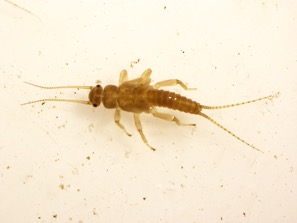 The impact of winter temperature increase on aquatic macroinvertebrates Ben Curell, Angelea McPartlin, and Maurah Steinmetz (2018) Aquatic macroinvertebrates play an essential role in stream ecosystems. Given the potential metabolic demand, we investigated the impact of increased winter stream temperatures, due to climate change, on aquatic organisms. Macroinvertebrate samples were collected from headwaters and mainstem sites at the Kayaderosseras and Battenkill Rivers in February and March. Organisms in the families Taeniopterygidae, Nemouridae, and Simuliidae may be disproportionately impacted because these families contain many cold-adapted, winter and early spring-emergent species. |
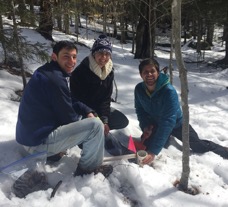 Road salt deposition and retention in the riparian zones: High impact in the High Peaks? Daniel Casarella, Connor Christoffersen, and Jennifer Cristiano (2018) Road salt (NaCl) application in the Adirondack Park (AP) is expected to increase with climate change. We assessed the impact of NaCl on riparian soils in the AP because riparian zones are vital to protecting AP waterways. We used soil samples from Johns Brook Tributary (JBT), which is not exposed to winter salting, and Cascade Brook (CB), which is. CB soils had higher Na and Cl concentrations. JBT had higher concentrations of available ammonium and phosphate. There were no statistically significant differences in soil macroaggregates or microbial communities. |
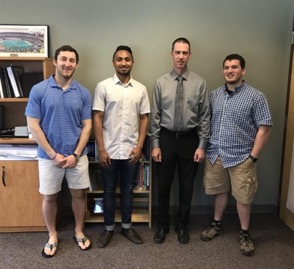 Energizing schools: A feasibility study of energy improvements for Saratoga Springs City School District (SSCSD) Khalil Choukeir, Jack Curry, and Miary Rasoanaivo (2018) The 6,000 public and private schools in New York State spend approximately $1 billion
annually on energy. We created an energy and greenhouse gas (GHG) inventory for SSCSD
and propose ways to reduce their energy costs and GHG emissions. The proposed LED
lighting project would save the school district $22,367 annually, with a <2-year payback
period. Proposed geothermal and solar thermal systems have longer payback periods.
Lastly, we propose a solar-powered sustainability park at the high school to be designed
and installed by the students and faculty. |
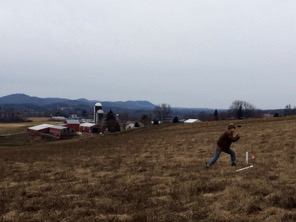 The various effects of varied tilling practices on long-term soil health Elizabeth Forelle and Katie Wolfe (2018) Soils are a critical natural resource given their role in everything from climate mitigation to food production. We examined the effects of varied tilling practices on long-term soil health and carbon retention. We focused on dairy farms in Washington County, NY that maintain multiple fields to grow crops to feed their livestock. Tilling practice had an impact on total carbon, total nitrogen, soil organic matter, macro- and micro-aggregates, and microbial diversity, with moldboard tilling showing the most significant and immediate soil impacts. |
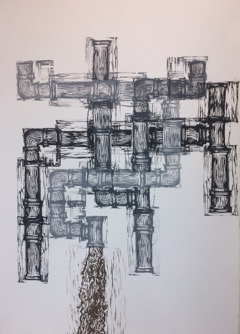 Karen Nolan and Carolyn Koestner (2018) Currently little data exist on the impacts of CSOs on winter water quality and of climate change on CSO events. We investigated the impacts of CSOs on water quality from November to March in the Capital District. Nitrate and phosphate levels were steady, however concentrations for ammonium were significantly higher in dry weather months. None of our samples, including non-CSO event samples, passed EPA standards for Escherichia coli, and few samples passed for Enterrococcus. Low turbidity levels did not necessarily indicate safe bacteria levels. Climate change is predicted to increase the frequency of CSO events in this region and extend the season of CSO events into the winter months. Julia Cavicchi, Olivia Golden, and Anne Pfeifenberger (2018) |
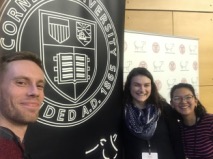 Alyssa Bueno, Ian Daly, and Tracey Wingate (2018) New York State (NYS) is the third largest producer of dairy in the US. We examined what sustainable agricultural practices (SAP) NYS dairy farmers are adopting, and their motivations. NYS dairy farmers are currently struggling due to low milk prices, and thus look for SAPs that contribute to the economic sustainability of an operation over environmental sustainability. If dairy farmers are expected to reduce the carbon footprint of their operations, they need more financial and technical support from state and federal agencies to help implement more expensive SAPs. |
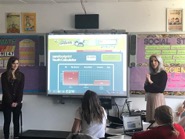 Climate change education with Catholic ideals: Measuring knowledge, attitudes and behaviors Meaghan Long and Bryn Sarner (2018) We sought to bridge the gap between Catholicism and environmentalism. Three lessons were taught to a Catholic 5th grade class: environmental worldviews, the science of climate change, and environmental advocacy. We found a significant increase in knowledge while pro-environmental attitudes only slightly improved. Certain concepts were too advanced for 5th Graders. Our research is useful for better understanding environmental education that works to incorporate Catholic ideals. |
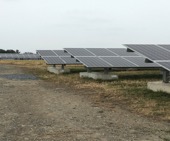 Opportunities for Community Shared Solar in Saratoga County: Policy, Economics & Interest Corey Brown and Henry Hoffmann (2018) Paper is not available. For more information, please contact the ESS Program Director. |
|
Rafaela Iturralde, Urvi Kalra, Emily Meagher, Yesenia Olivares (2018) |
